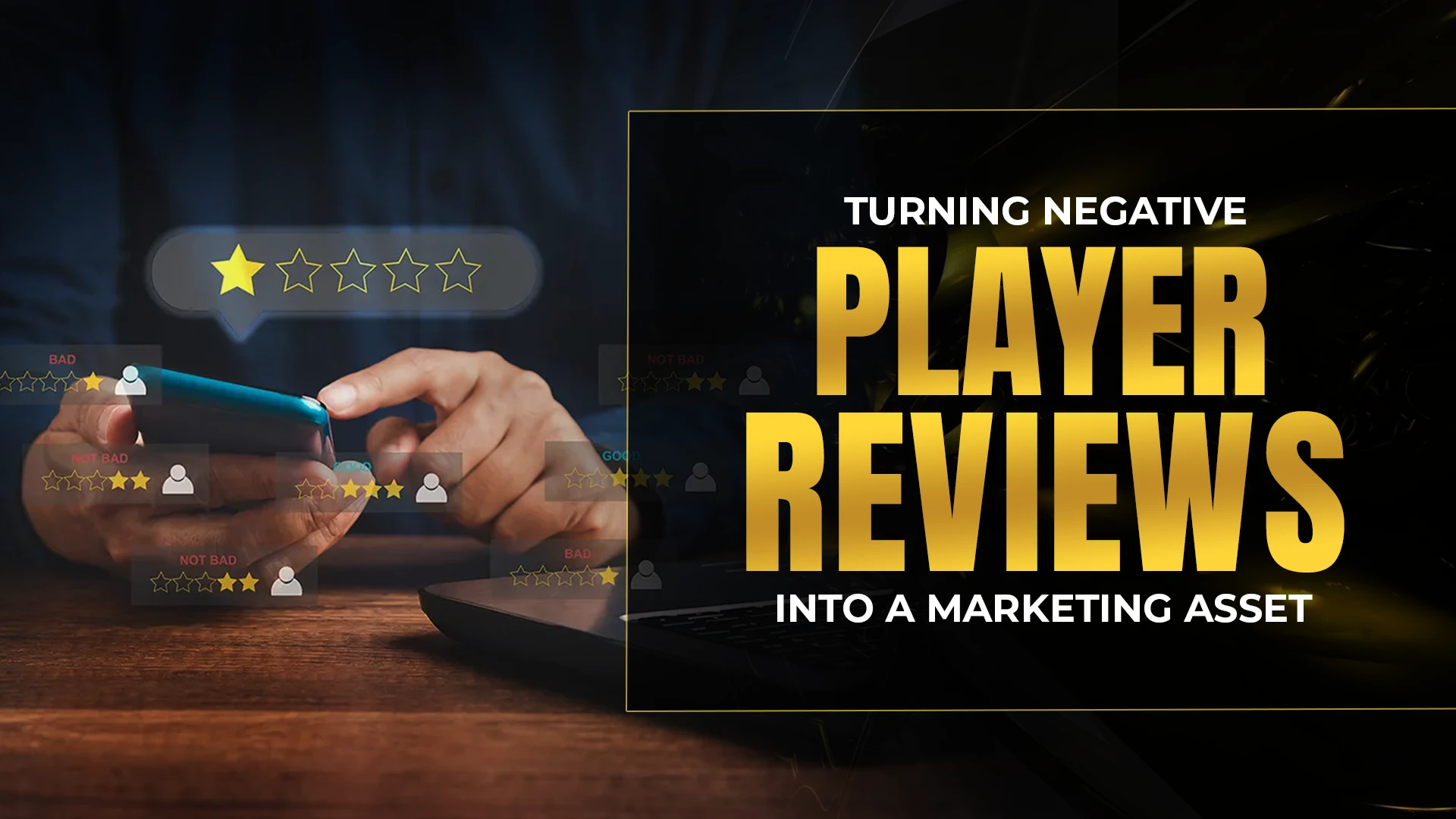In the gaming industry, player reviews can make or break a game’s reputation. While positive reviews help build credibility, negative reviews are often seen as a setback. However, smart game developers and publishers leverage negative feedback to enhance their brand and strengthen player trust.
Instead of fearing bad reviews, businesses can use them as an opportunity to engage with the community, improve the gaming experience, and showcase their commitment to quality. In this blog, we’ll explore how to turn negative player reviews into a marketing asset that helps grow your brand and player base.
1. Acknowledge and Respond Professionally
Ignoring negative reviews or responding defensively can damage your brand’s reputation. Instead, addressing criticism with a professional and empathetic response shows that you value player feedback.
- Acknowledge the issue and thank the player for their feedback.
- Apologize sincerely if the complaint is valid.
- Offer solutions or updates to resolve the problem.
By showing that you care about user concerns, you turn a negative review into an opportunity to improve player trust.
2. Identify Patterns in Negative Feedback
Not all negative reviews are random complaints—some highlight genuine issues that need addressing. If multiple players complain about the same problem, it’s a sign that improvements are needed.
- Monitor review trends on gaming platforms like Steam, PlayStation Store, and Xbox.
- Use social media and gaming forums to track common complaints.
- Prioritize updates based on frequent player concerns.
Fixing recurring issues and informing players about updates can turn critics into loyal supporters.
3. Leverage Constructive Criticism for Game Updates
Many negative reviews contain valuable insights that can guide future updates and patches. Instead of dismissing these complaints, use them as a blueprint for game improvement.
Example:
A player complains about unbalanced gameplay mechanics in a review. Instead of ignoring it, the development team tweaks the mechanics in the next update and announces it publicly.
This not only fixes the problem but also shows responsiveness, which strengthens player loyalty.
4. Turn Negative Reviews Into Engaging Content
Negative reviews can be powerful content for marketing when addressed with humor, honesty, or transparency. Many game studios use bad reviews creatively in promotional materials.
Ideas for leveraging negative reviews in marketing:
- 🎮 Create funny response videos addressing common complaints.
- 📢 Highlight negative feedback turned into positive changes on social media.
- 📜 Feature before-and-after updates in patch notes, showing how feedback influenced improvements.
By owning the criticism and showing progress, you transform negative reviews into engaging, community-driven content.
5. Showcase Player-Driven Improvements
When you implement changes based on player feedback, make sure they know it. Gamers appreciate developers who listen, and promoting these updates can strengthen community trust and engagement.
- Announce improvements in developer blogs, patch notes, and social media posts.
- Use phrases like “Based on player feedback” or “You asked, we delivered” in updates.
- Highlight community involvement through Q&A sessions, live streams, or social media interactions.
A developer who listens to players is a developer players will support.
6. Encourage Players to Update Their Reviews
If a major update fixes previously criticized aspects of the game, encourage players to revisit their reviews. Some ways to do this include:
- Replying to negative reviews and informing them about the update.
- Offering in-game incentives for updated feedback.
- Using social media to highlight major improvements and asking for re-evaluations.
Many players are willing to change their reviews if they see that the developers listened and acted on their concerns.
7. Use Negative Reviews to Set Realistic Expectations
Some negative reviews are based on unrealistic expectations rather than actual flaws. Addressing these in your marketing can help attract the right audience while reducing potential backlash.
- If a game is hardcore and challenging, emphasize that in marketing to attract players who enjoy difficulty.
- If the game has microtransactions, clearly communicate how they work to prevent misunderstandings.
- Use honest trailers or disclaimers to set the right expectations.
This transparency ensures that your game reaches players who will appreciate it, reducing unnecessary negative reviews.
Conclusion: Turning Criticism Into Growth
Negative reviews aren’t the end of the world—they’re an opportunity to improve your game, strengthen your community, and build a loyal fanbase. By acknowledging feedback, making necessary changes, and leveraging criticism creatively, developers can turn setbacks into powerful marketing tools.
Gamers appreciate transparency, responsiveness, and continuous improvement. When you show that you’re listening and evolving, you convert critics into passionate supporters—helping your game thrive in the competitive gaming industry.
FAQ’s
How should developers respond to negative player reviews?
Developers should acknowledge the feedback, respond professionally, and offer solutions when possible. Engaging with criticism positively builds trust.
Can negative reviews actually help a game’s marketing?
Yes! Negative reviews can highlight areas for improvement, create engaging marketing content, and demonstrate a developer’s commitment to quality.
How do game studios track common complaints from reviews?
Developers use review monitoring tools, social media tracking, and direct player feedback to identify recurring issues and prioritize updates.
What if a negative review is based on personal preference rather than game flaws?
If a review is based on subjective preferences, developers can use marketing to set realistic expectations and target the right audience.
How can game developers encourage players to update negative reviews?
By implementing changes, informing players about improvements, and offering incentives, developers can persuade players to revise their feedback positively.

